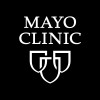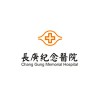
Needle-Based Confocal Laser Endomicroscopy for Diagnosis of Lung Cancer in Patients With Peripheral...
Lung CarcinomaThis clinical trial compares the addition of needle-based confocal laser endomicroscopy (nCLE) and fluorescein to endobronchial ultrasound-guided transbronchial needle aspiration (EBUS TBNA) with EBUS TBNA alone for the diagnosis of lung cancer in patients with peripheral pulmonary nodules. EBUS TBNA is a diagnostic procedure that can be used to sample lung tissue. nCLE is a novel high-resolution imaging technique that uses a laser light to create real-time microscopic images of tissues. It can be integrated into needles allowing real-time cancer detection during endoscopy. Fluorescein is an imaging agent that can be used to visualize tissue. Using nCLE and fluorescein in combination with EBUS TBNA may be more effective in diagnosing lung cancer than using EBUS TBNA alone.

Assessing Social Determinants of Health to Increase Cancer Screening
Lung CancerA multilevel lung screening intervention that pairs Social Determinants of Health (SDoH) screening and referral with a tailored health communication and decision support tool for lung screening has the potential to significantly impact lung screening uptake among at-risk individuals in the community, particularly among those who face barriers related to SDoH. In addition, findings will advance the understanding of effective strategies for improving lung screening and prevention efforts in non-traditional settings, with the ultimate goal of reducing the burden of lung cancer. As ways to support the realization of the public health benefit of lung cancer screening are considered, multiple strategies and venues to reach, and intervene, with screening-eligible is key. The goal of this study is to compare the effectiveness of a community-based lung screening educational tool paired with a social determinants of health (SDoH) screening assessment and referral process compared to a community-based lung cancer screening (LCS) educational tool alone as part of community outreach activities to improve (a) LCS rates (primary outcome); (b) intention to screen; and (c) individual-level potential drivers of LCS (health literacy, mistrust, stigma, fatalism, knowledge, health beliefs). It is hypothesized that providing SDoH screening and referral will result in higher levels of LCS, forward movement of intention to screen, and improved individual-level drivers of LCS.

Comparison of 68Ga-FAPI-46 PET and 18F-FDG PET in Lung Cancer
Lung CancerThis is a prospective, single-center, single arm, open label study to evaluate the performance of 68Ga-FAPI-46 for the diagnosis of primary and metastatic lesions of lung cancer with comparison to 18F-FDG PET.

Study of KN046 in Subjects With Advanced Non-Small Cell Lung Cancer
Advanced Non-small Cell Lung CancerThis is an open-label, multi-center, Phase 2 study in subjects with treatment-naïve locally advanced (unresectable and unable to receive radical chemoradiotherapy) or metastatic PD-L1-positive non-small cell lung cancer (NSCLC) who have received systemic therapy.

18F-Fluoroazomycin Arabinoside (18F-FAZA) in Lung Cancer
Lung CancerThe purpose of this study is to look for low levels of oxygen (hypoxia) in lung cancer using a positron emission tomography (PET) scan. Hypoxia can influence how lung cancer grows and responds to treatments like radiotherapy and chemotherapy. The use of PET scans to measure hypoxia may be better and simpler than the approaches used previously. This study will assess whether or not PET scans can provide useful information about hypoxia in lung cancer. In this study, a radiotracer called Fluoroazomycin Arabinoside (FAZA) will be used to measure hypoxia in the patient's tumour. FAZA has already been used in many cancers including lung cancer. Patients who consent to participate in this trial will receive 1 FAZA PET Scan prior to their first radiotherapy treatment

Early Versus Delayed Rehabilitation Intervention in Patients With Lung Cancer
Lung CancerIn Italy, the incidence of lung cancer for the year 2020 has been estimated at about 41.000 new diagnoses. Patients with lung cancer experience debilitating symptoms caused by the disease itself and cancer treatments, such as dyspnea and fatigue, which reduce physical function and quality of life (QoL). It is estimated that 90% of patients undergoing chemotherapy and 57% of patients undergoing lung resection suffer of Cancer-Related Fatigue (CRF). Previous studies have shown that educational interventions and aerobic and resistance exercise are effective in improving CRF and QoL in patients with lung cancer. However, to date the optimal dose, mode and timing to deliver the intervention during the care pathway for lung cancer patients is unknown. Tolerability and frequency of cancer treatment could be a barrier to adherence to the intervention. Therefore, this study aims to evaluate the feasibility of a rehabilitation intervention aimed at improving CRF with respect to timing of delivery: early vs delayed rehabilitation in lung cancer patients.

Promoting Goals-of-Care Discussions for Patients With Memory Problems and Their Caregivers
DementiaChronic Disease21 moreThe goal of this clinical trial is to improve communication among clinicians, patients with memory problems, and their family members. We are testing a way to help clinicians have better conversations to address patients' goals for their healthcare. To do this, we created a simple, short guide called the "Jumpstart Guide." The goal of this research study is to show that using this kind of guide is possible and can be helpful for patients and their families. Patients' clinicians may receive a Jumpstart Guide before the patient's clinic visit. Researchers will compare patients whose clinician received a Jumpstart Guide to patients whose clinician did not receive a guide to see if more patients in the Jumpstart Guide group had conversations about the patient's goals for their healthcare. Patients and their family members will also be asked to complete surveys after the visit with their clinician.

Exercise Prehabilitation for Patients With NSCLC Before Surgery
PrehabilitationNon Small Cell Lung Cancer2 moreTo explore the safety and compliance of a wearable telemedicine device that can receive basic vital signs in real time, and its active supervision mode with real-time adjustment of exercise prescription for preoperative prehabilitation exercises in patients at home; and to evaluate the effectiveness of preoperative prehabilitation exercises in a telemedicine active supervision mode in patients undergoing thoracoscopic lung tumour resection, taking into account the patient's cardiopulmonary exercise test, postoperative complications and quality of life scores.

The Neuroendocrine Effects of Pioglitazone in Patients With Lung Cancer and Cachexia
Lung CancerThe goal of this clinical trial is evaluate the effect of pioglitazone compared with placebo on skeletal muscle insulin sensitivity in subjects with advanced non-small-cell lung cancer and cachexia.

Immunological Variables Associated to ICI Toxicity in Cancer Patients
Breast CancerMelanoma12 moreThis is a monocentric, prospective, pilot study that will enrol 435 subjects with solid tumours that are treated with immune checkpoint inhibitor(s) (ICI) alone or in combination with chemotherapy or targeted therapy. For enrolled subjects, clinical and laboratory evaluations will be performed and reported at different time points: Early (4-6 weeks after treatment start) Midtime (8-11 weeks after treatment start) Late (13-18 weeks after treatment start) At the occurrence of immune-related adverse events (irAEs), clinical and laboratory evaluation will be performed at two principal time points: For the 1st time of any grade 1 or 2 irAE if the subject developed it. For the 1st time of any grade 3 or 4 irAE if the subject developed it.
